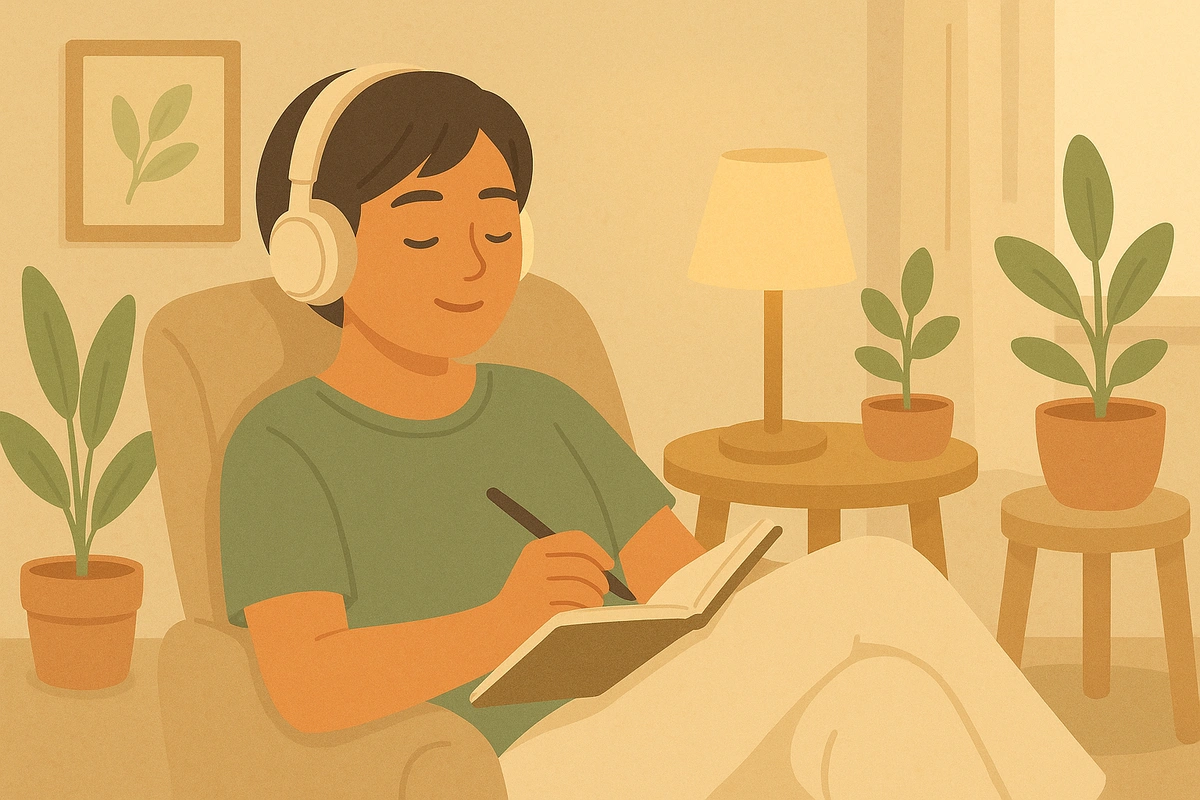Building a personalized collection of soothing music and sounds that helps reduce anxiety and promote relaxation during stressful moments. Research shows that music around 60 beats per minute can synchronize your brain waves to induce calm, while strategically curated playlists provide immediate access to stress relief whenever you need it most.

Creating a calming playlist involves carefully selecting music and sounds that promote relaxation and reduce stress. This proactive approach ensures you have an effective tool ready when anxiety strikes or you need to unwind.
Research shows that music around 60 beats per minute can cause the brain to synchronize with the beat causing alpha brainwaves, which are present when we feel relaxed and conscious. By building your playlist during calm periods, you develop a personalized resource that can quickly activate your body's relaxation response and help manage challenging emotions.
Music activates multiple pathways in the brain that promote relaxation and stress reduction. Music triggers the release of dopamine, a hormone released during pleasurable activities, which can boost positive feelings and help manage discomfort.
The therapeutic effects occur through several mechanisms. Music therapy showed an overall medium-to-large effect on stress-related outcomes, with research demonstrating significant benefits for both psychological and physiological stress markers.
Listening to calming music helps regulate the autonomic nervous system, which controls automatic body functions. Music improves sleep through calming parts of the autonomic nervous system, leading to slower breathing, lower heart rate, and reduced blood pressure.
Creating your playlist proactively during calm periods ensures you have immediate access to an effective coping tool. The most profound effects were found when 'relaxation' was stated as the reason for music listening, with subsequent decreases in subjective stress levels and lower cortisol concentrations.
The personalization aspect is crucial because one of the most significant factors in how music affects a person's body is their own musical preferences. Your carefully selected tracks will be more effective than generic relaxation music.
"The music doesn't seem to help during really stressful moments" - Try listening to your playlist during moderately stressful times first to build the association. Also ensure your volume is appropriate and you're in a reasonably quiet environment.
"I get bored with the same songs" - This is normal and expected. Refresh your playlist regularly with new tracks that meet your relaxation criteria. Having multiple playlists for different moods can help maintain interest.
"Some tracks that used to relax me now feel annoying" - Musical preferences change over time, especially during different life phases. Remove tracks that no longer serve you and explore new options that match your current needs.
"I can't find music that relaxes me" - Start with nature sounds or very simple instrumental music. Avoid trying to force tracks that don't feel right. Consider exploring different cultures' traditional relaxing music.
"The playlist works sometimes but not others" - Environmental factors like noise, lighting, and your stress level affect music's effectiveness. Try using headphones, adjusting volume, or combining music with other relaxation techniques.
"I feel self-conscious about my music choices" - Remember that effective relaxation music is highly personal. What matters is how the music affects your stress level, not whether others would enjoy it.